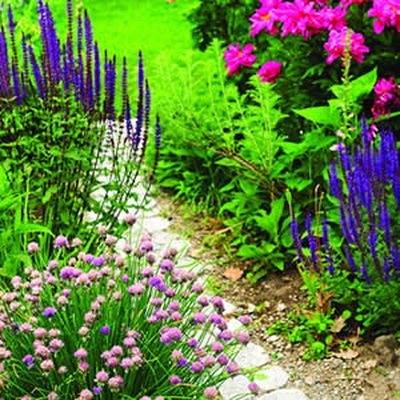Going Native in the Garden
Gardening With Charlie

(Family Features) - It’s time to go native in the garden. That’s not as risqué as you think. Growing native trees, shrubs, and flowers is a good way to plant a low maintenance landscape, while still enjoying colorful flowers, leaves, and fruits in our yard.
But what are native plants and why grow them? Here are the answers to those and other questions about going native.
What is a Native Plant?
Native plants are those species and varieties that have naturally evolved in an area over thousands of years. There are many plants that have naturalized in specific areas by escaping from gardens and domestic cultivation and spreading in the native environment. However, a true native is a plant that has co-evolved with the specific ecosystem and the insects, animals, microbes, soil, and weather.
Why Grow Natives?
There are many advantages to growing native plants in your yard. Since they’re adapted to the natural ecosystem, they’re better able to withstand climate changes and invasions from insects and diseases. Natives require little care once established in your yard.
Native plants also are not invasive. They have evolved a delicate balance with other plants, pests, and diseases so they don’t overwhelm an ecosystem, but remain an essential part of it. Because they’re so well adapted to a specific region, they provide reliable food and shelter to local wildlife, such as birds, mammals, and bees.
Some Natives to Grow
Natives are beautiful. While many native plants have beautiful flowers, they also offer other traits such as interesting bark, foliage, and berries for a multi-season appeal.
Here are a few native trees, shrubs, and perennials to consider for your yard. These are hardy in most areas of the country. Check your local garden center for other choices in your area.
- Pagoda dogwood, (Cornus alternifolia) has beautifully sculpted tree branches that feature white flowers in spring. The flowers give way to dark blue berries in summer and fall that birds love. The leaves turn a burgundy color in autumn as well.
- Sweet Pepper bush (Clethra alnifolia) features fragrant white flowers in mid summer when few other shrubs are blooming. The flowers are a magnet for bees and butterflies. The deciduous shrub can grow in acidic soils and part sun. It even tolerates road and ocean salt sprays.
- River birch (Betula nigra) is a clumping deciduous tree that has beautiful arching branches, brilliant golden fall foliage, and attractive, pealing bronze colored bark. Unlike other birches, it has few pest problems.
- Joe Pye weed (Eupatorium maculatum) is a perennial flower often found growing in partly sunny, wet areas along roadsides. This native can reach up to 8 feet tall with clusters of purple flowers in late summer. It’s a favorite of butterflies.
- Butterfly weed (Asclepias) is a perennial flower that blooms from mid summer until fall with clusters of red, yellow, or orange colored flowers depending on the species. Not only is it a butterfly favorite, the flowers, and subsequent pods, are attractive as well.
Charlie Nardozzi, a nationally recognized garden writer, book author, speaker and radio and television personality, has appeared on HGTV, PBS and Discovery Channel television networks. He is the senior horticulturist and spokesperson for the National Gardening Association (www.garden.org) and Chief Gardening Officer for the Hilton Garden Inn.
SOURCE:
National Gardening Association